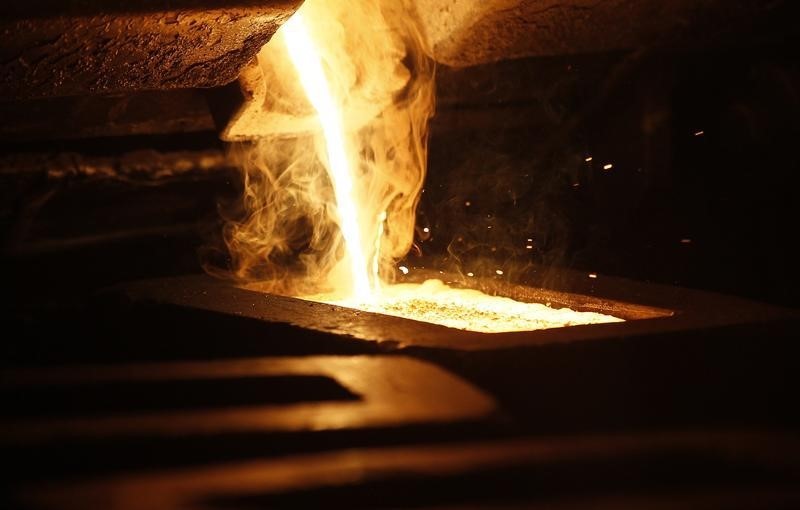Investing.com - Gold prices edged up in Asia on Monday with tension in the Middle East supporting risk demand as Baghdad moved troops into the oil-rich Kirkuk region where the Kurdish Regional Government has a stronghold and has mulled a push for independence opposed by Iraq, Iran and Turkey.
As well, President Donald Trump's decision last week to question whether to continue with a landmark deal with Iran has raised economic conflict concerns as well. China reported September prices data gained 0.5%, compared to an expected 0.4% rise sen on on month and up 1.6% on year as expected, while PPI jumped 6.9%, compared to an expected 6.3% gain.
Gold futures for December delivery rose 0.03% at $1,304.93 a troy ounce on the Comex division of the New York Mercantile Exchange.
This week, investors will be looking at U.S. housing data to assess the economic impact of the hurricanes which hit the southern U.S. last month.
Thursday’s data on third quarter Chinese growth will be closely watched for insight into the health of the world’s second largest economy.
Tuesday’s UK inflation data will also be in focus amid speculation over a possible rate hike by the Bank of England as soon as next month.
Last week, gold prices rose on Friday as weaker-than-expected U.S. inflation data added to doubts over the Federal Reserve’s plans to raise interest rates once more this year.
Consumer prices rose 0.5% last month after advancing 0.4% in August the Labor Department reported Friday. Economists had forecast a 0.6% increase.
It was the largest increase in eight months, but was mainly driven by soaring gasoline prices after hurricanes hit the southern U.S. Underlying inflation remained subdued.
The report came after the minutes of the Fed's September meeting published on Wednesday showed "many participants expressed concern that the low inflation readings this year might reflect not only transitory factors, but also the influence of developments that could prove more persistent."
The data tempered expectations that the Fed will hike interest rates in December for a third time this year.
Gold is highly sensitive to rising rates, which lift the opportunity cost of holding non-yielding assets such as bullion, while boosting the dollar, in which it is priced.
